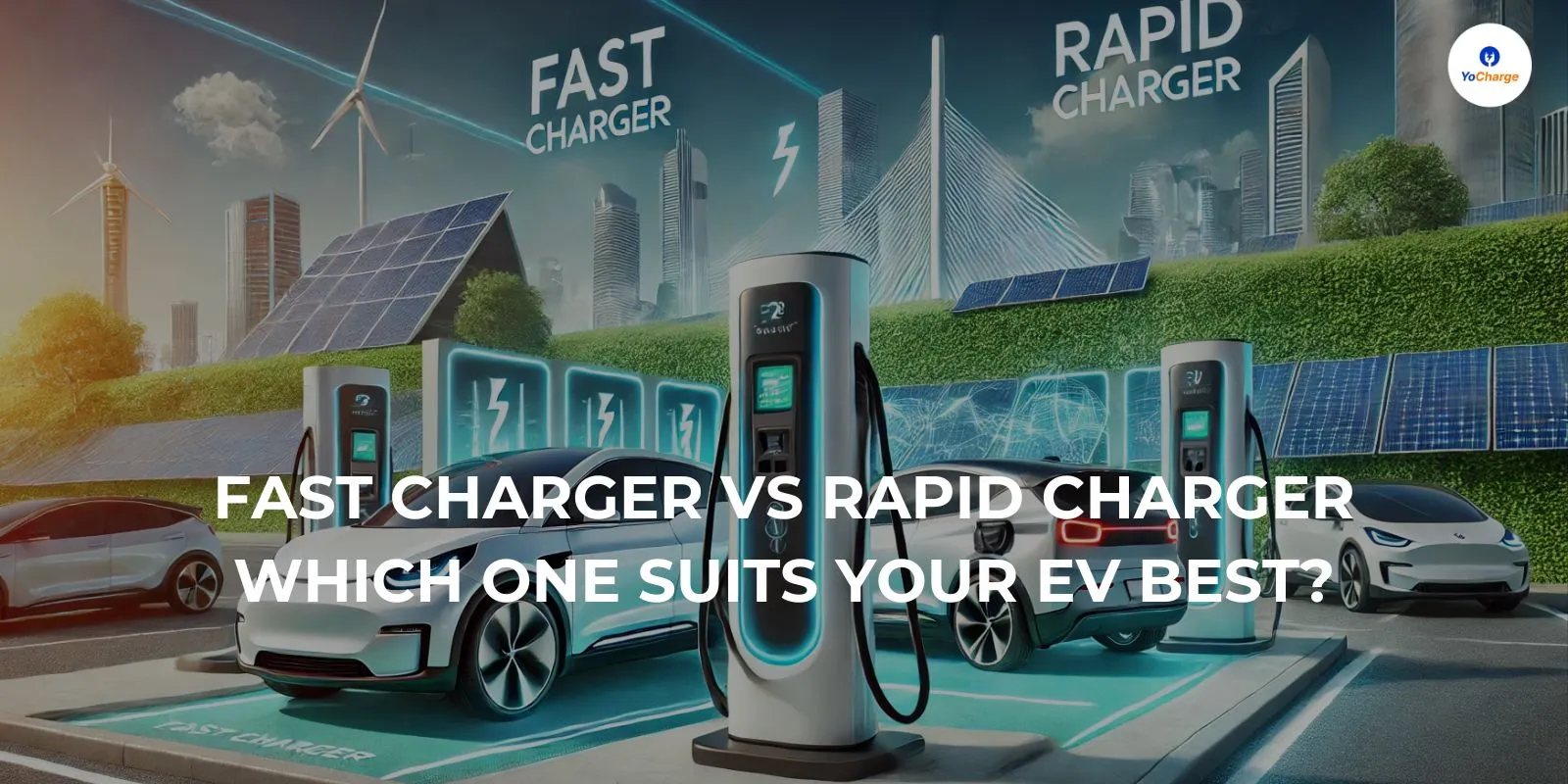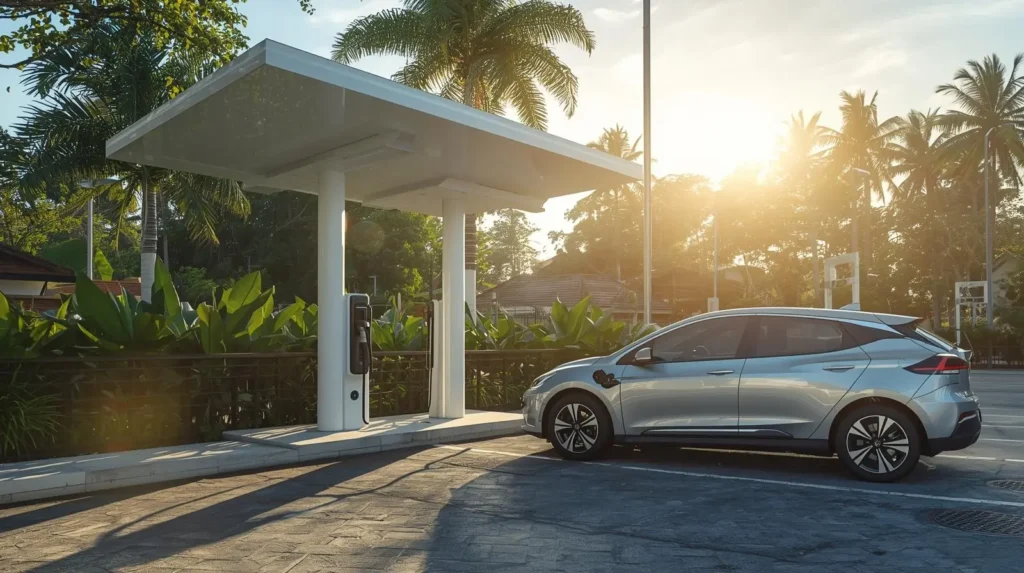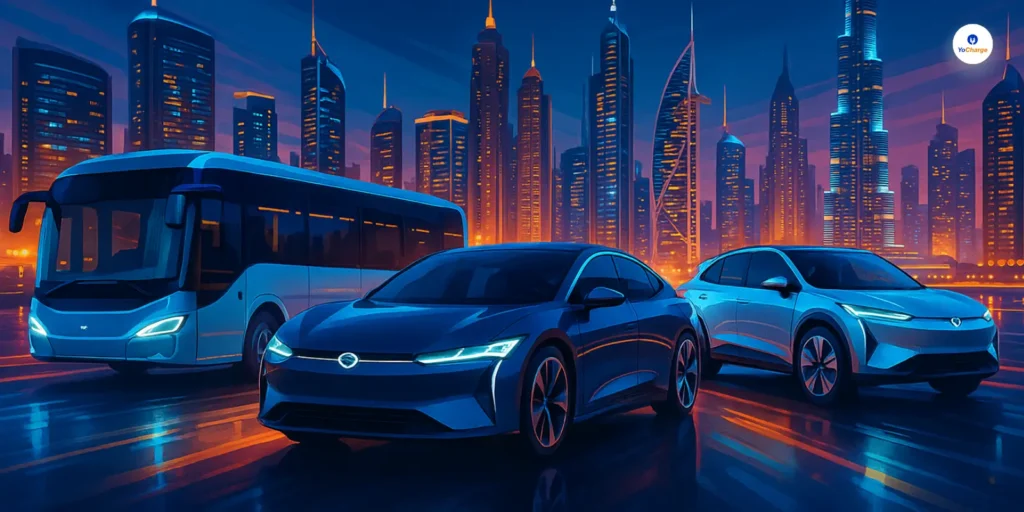
Fast Charger vs Rapid Charger: Charging your electric vehicle is not just about plugging in; it’s about choosing the right charger for your lifestyle. Fast chargers and rapid chargers are two popular options, but they serve different purposes.
Do you need cost-effective charging for everyday use, or lightning-fast power during road trips? Understanding their differences can save you time, money, and even extend your battery’s life.
What is a Fast Charger?
A fast charger uses alternating current (AC) to charge your EV. These chargers provide power outputs between 7 kW and 22 kW. They are perfect for charging during errands or at work. Fast chargers are more affordable and widely available, making them ideal for daily use.
Key Characteristics of Fast Chargers
- Power Output: 7 kW to 22 kW.
- Charging Time: Takes 1 to 4 hours to fully charge.
- Connector Types: Type 2 in Europe and J1772 in North America.
- Location: Found in shopping malls, workplaces, and residential areas.
What is a Rapid Charger?
A rapid charger uses direct current (DC) to provide high-speed charging. These chargers offer power outputs from 25 kW to over 150 kW. Rapid chargers are ideal for long trips or quick stops when time is limited. They can charge most EVs up to 80% in 30 minutes.
Key Characteristics of Rapid Chargers
- Power Output: 25 kW to over 150 kW.
- Charging Time: Can charge 80% in around 30 minutes.
- Connector Types: Commonly uses CHAdeMO, CCS, and Tesla connectors.
- Location: Found at highways, service stations, and key transit points.
Also Read: 4 Major Ways of Electric Vehicle Charging in Dubai
Fast Charger vs Rapid Charger
| Feature | Fast Charger | Rapid Charger |
|---|---|---|
| Power Output | 7 kW – 22 kW | 25 kW – 150 kW+ |
| Charging Time | 1 – 4 hours | 30 minutes to 1 hour |
| Charging Method | AC (Alternating Current) | DC (Direct Current) |
| Typical Use Case | Shopping trips, work | Long-distance travel |
| Connector Types | Type 2, J1772 | CHAdeMO, CCS, Tesla |
| Cost per Charge | Lower | Higher |
| Battery Impact | Minimal wear | Potential battery wear |
Advantages of Fast Chargers
Fast chargers are a reliable and affordable option for daily EV charging needs. They balance cost, convenience, and battery care effectively.
1. Affordable Charging
Fast chargers cost less than rapid chargers. They are budget-friendly for regular use.
2. Prolongs Battery Life
Charging with lower power reduces stress on the battery, extending its lifespan.
3. Widely Available
Fast chargers are common in homes, workplaces, and public locations. They provide easy access for everyday use.
4. Convenient for Longer Stays
They are perfect for charging during shopping, working, or other longer stops.
Disadvantages of Fast Chargers
While fast chargers are cost-effective, their slower speed might not suit every situation, especially during long trips.
1. Longer Charging Times
Fast chargers take 1 to 4 hours to fully charge, which may not suit urgent needs.
2. Lower Power Output
Their slower charging speed makes them unsuitable for quick top-ups during long trips.
Advantages of Rapid Chargers
Rapid chargers are designed for speed and efficiency, making them ideal for long-distance travel or quick top-ups.
1. Quick Charging
Rapid chargers can power an EV up to 80% in about 30 minutes. They save time during journeys.
2. Perfect for Road Trips
These chargers are ideal for long-distance travel, ensuring quick top-ups at highway stops.
3. High Power Output
With outputs up to 150 kW or more, even large EV batteries charge efficiently.
Disadvantages of Rapid Chargers
Despite their speed, rapid chargers have higher costs and may lead to potential battery degradation with frequent use.
1. Higher Costs
Rapid chargers are more expensive due to their advanced technology and high power output.
2. Battery Wear Concerns
Frequent use may increase battery degradation over time, reducing its longevity.
3. Limited Availability
While increasing in numbers, rapid chargers are not as widely available as fast chargers.
Which Charger Should You Choose?
The choice between fast charger vs rapid charger depends on your needs:
- Fast Charger: Ideal for regular use, such as at home or work. It’s affordable and gentle on the battery.
- Rapid Charger: Best for long-distance travel and quick top-ups. It is faster but comes with higher costs.
Also Read: Lifespan of an EV Battery
Tips for Optimizing Your EV Charging
- Plan Ahead: Identify nearby chargers along your route.
- Combine Charging Methods: Use fast chargers for regular use and rapid chargers for road trips.
- Monitor Battery Health: Avoid over-relying on rapid chargers to protect your battery’s lifespan.
Conclusion
Understanding the differences between fast charger vs rapid charger is essential for EV owners. Fast chargers are cost-effective, suitable for daily use, and widely available. Rapid chargers provide high-speed charging for long trips but come with higher costs and potential battery wear.
Choose the right charger based on your driving habits, journey lengths, and local infrastructure. Making informed decisions ensures your EV remains efficient, convenient, and long-lasting.



